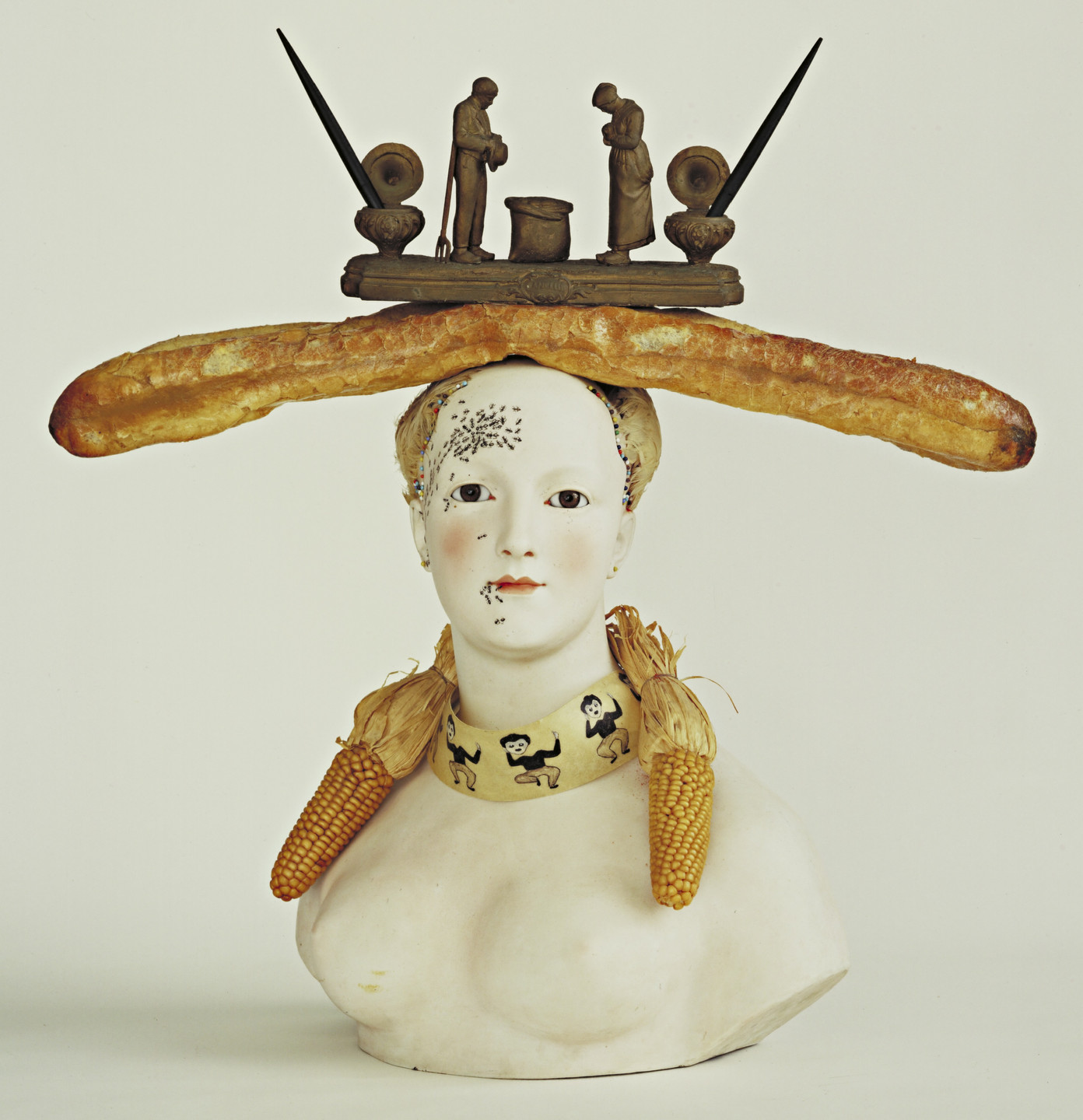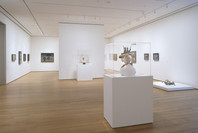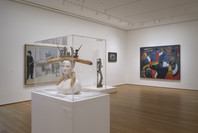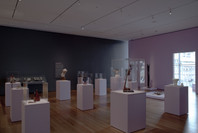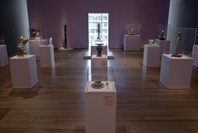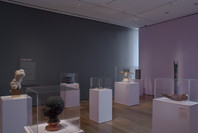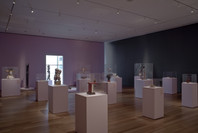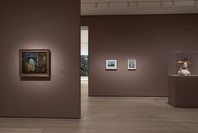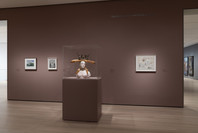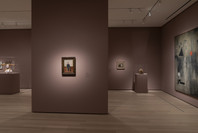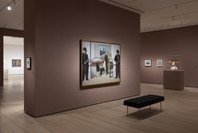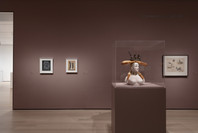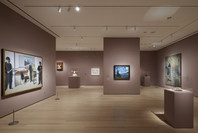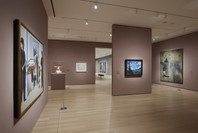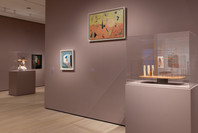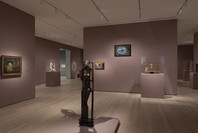The idea for this work began when Salvador Dalí discovered an inkwell illustrated with the praying couple from Jean-Francois Millet’s painting The Angelus (1857–59). He embedded the inkwell in a loaf of bread and placed them both on the portrait bust of a woman. A strip of images from an early cinematic toy called a zoetrope encircles her neck.
In 1931 Dalí described Surrealist sculpture as “created wholly for the purpose of materializing in a fetishistic way, with maximum tangible reality, ideas and fantasies of a delirious character.” Retrospective Bust of a Woman not only presents a woman as an object, but explicitly as one to be consumed. A baguette crowns her head, cobs of corn dangle around her neck, and ants swarm along her forehead as if gathering crumbs.
